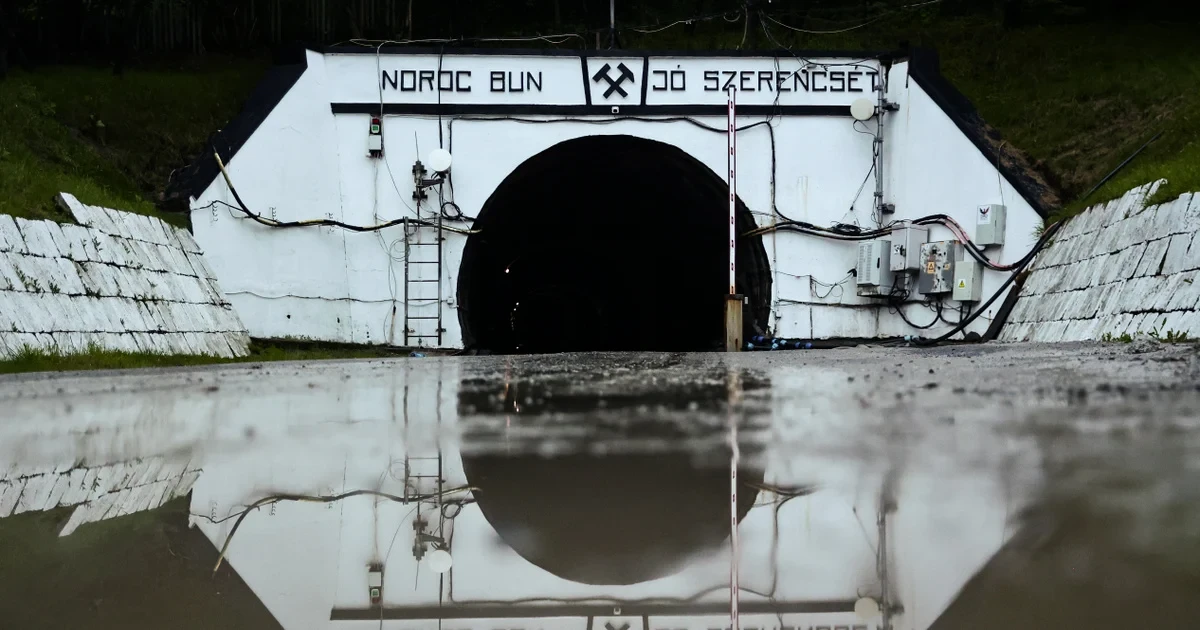“In the worst-case scenario, the entire Parajd salt mine could collapse” – stated Prof. Dr. Péter Szűcs, Doctor of the Hungarian Academy of Sciences, Vice-Rector for Scientific Affairs of the University of Miskolc, and Head of the Department of Hydrogeology. He responded to questions regarding the future of the Parajd salt mine, which was affected by a natural disaster, during an interview on InfoRádió.
The site of the natural disaster is Parajd in the Székely region, where the swollen Korond stream flooded the famous salt mine, which served both as a production facility and a tourist attraction. By last Thursday, it became clear that underground defense efforts had to be abandoned after the latest section of the facility, the Telegdy mine, could not be protected from the incoming water. This part of the salt mine was the area where experts still hoped to save it from flooding. After the water found its way into the tunnels, the workers involved in the underground rescue had to evacuate the mine due to dangerous conditions. The extracted salt stored there, along with machinery and equipment, could not be saved.
“This is one of the largest contiguous salt deposits in Central Europe, with depths measured in kilometers, reaching all the way up to the surface. Since the Middle Ages, a multi-level mining system has been developed here, part of which now also operates as a tourist attraction” – said Prof. Péter Szűcs in an interview with InfoRádió. He also reminded that water can be especially dangerous for a salt mine.
The chambers, tunnels, and galleries in the mine were flooded by the stream’s water, which began dissolving the salt. This is a rapid process — one cubic meter of water can dissolve about 300 grams of salt. Currently, the salt will continue to dissolve in the mine until the water reaches this saturation level, at which point equilibrium will be established. “The problem is that as the salt dissolves, the pillars and supports that have so far maintained the stability of the mine may also be damaged. It is unpredictable what parts might become irreparable, collapse, or become dangerous” – the expert explained, listing the concerns. He also suggested that pumping out the water quickly could help, but it might actually be the water filling the mine that prevents a complete collapse at this moment. He believes that in the best case, the mine will not collapse because it is a large, multi-level mine, but in some areas, catastrophic dissolution processes may cause the collapse of certain sections.
“If it’s possible to stop further water inflow, that would already be a good thing in this difficult situation, and the next step would obviously be to remove the water: there is no other option but to pump the water out of the mine” – he explained. He also elaborated that the technology for mine dewatering exists, allowing significant amounts of water to be extracted even from depths of several hundred meters. The bigger problem, however, is that the pumped-out water has such a high salt content that it could cause serious damage to the surrounding ecosystem. Diluting the extracted water is a possible solution, but even then, it remains a major question whether it is safe to release the water back into a natural watercourse.
“There will be parts of the mine that will be seriously damaged and may have to be permanently closed. Obviously, after the water is removed, experts will be able to assess which areas remain mechanically stable” – said Péter Szűcs. However, he added that the worst-case scenario would be if the flooding and dissolution cause the entire overhead space of the mine to collapse completely, crushing the whole mine, because in that case, restoration would be impossible.
